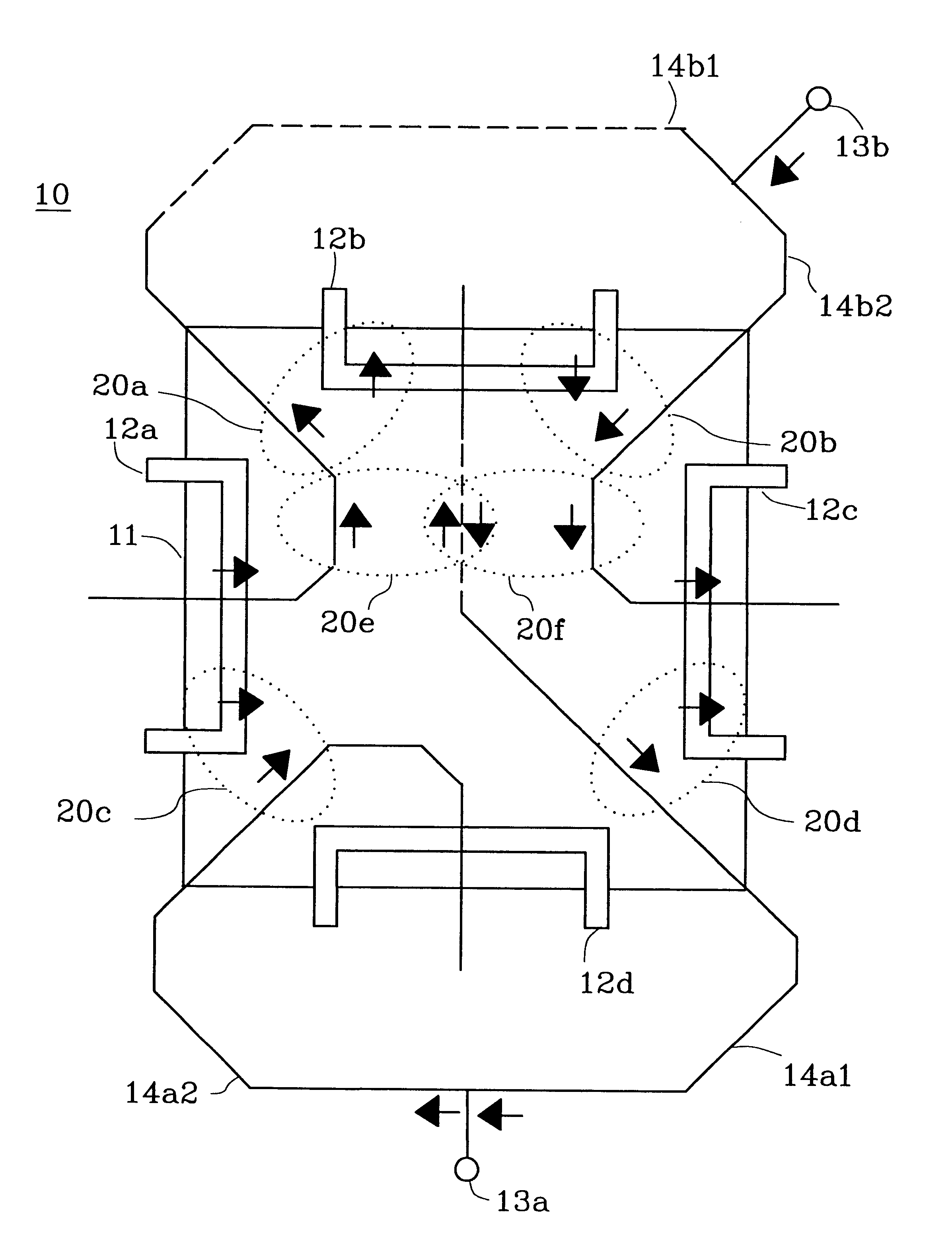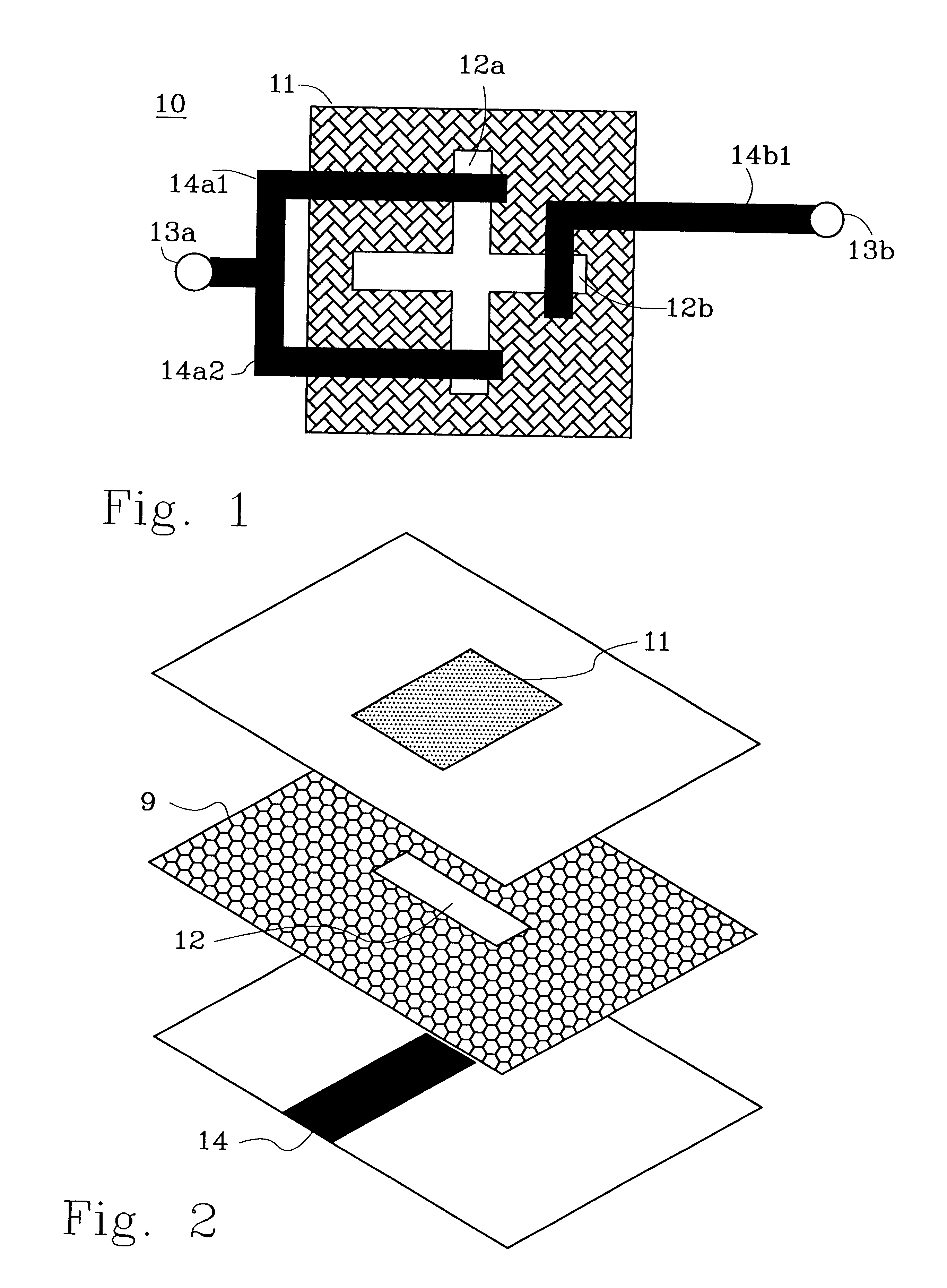Dual-polarized antenna
a dual-polarized antenna and antenna technology, applied in the direction of antennas, antenna details, antenna earthings, etc., can solve the problems of inability to achieve perfect isolation between feed ports in a dual-polarised antenna, inability to achieve good isolation between feed ports and undesired output ports,
- Summary
- Abstract
- Description
- Claims
- Application Information
AI Technical Summary
Problems solved by technology
Method used
Image
Examples
Embodiment Construction
FIG. 1 shows an example of a prior art dual-polarised microstrip antenna (WO 98 / 49741). An antenna element 10 comprises a patch 11 and two orthogonal slots 12a, 12b as feed structures. Two ports 13a, 13b--one for each polarisation--are the sources for the feed network 14. Port 13a is connected to network part 14a that bifurcates into branches 14a1 and 14a2. Each of these branches 14a1, 14a2 cross the vertical slot 12a, one on each side of slot 12b. Port 13b on the other hand is connected to another network part 14b1. This second network part 14b1 intersects slot 12b.
As can be seen from FIG. 1, slot 12b is not fed symmetrically. The design does not allow for simultaneous symmetrical slot feed for both polarisation ports. This leads to polarisation impurities.
One way of improving port isolation is to arrange and exploit symmetries in the feed network. The resulting current symmetries will also generate similar patterns for the two orthogonal polarisations.
A first concern when designin...
PUM
 Login to View More
Login to View More Abstract
Description
Claims
Application Information
 Login to View More
Login to View More - R&D
- Intellectual Property
- Life Sciences
- Materials
- Tech Scout
- Unparalleled Data Quality
- Higher Quality Content
- 60% Fewer Hallucinations
Browse by: Latest US Patents, China's latest patents, Technical Efficacy Thesaurus, Application Domain, Technology Topic, Popular Technical Reports.
© 2025 PatSnap. All rights reserved.Legal|Privacy policy|Modern Slavery Act Transparency Statement|Sitemap|About US| Contact US: help@patsnap.com



